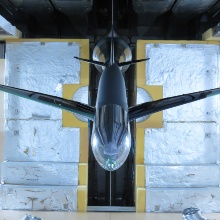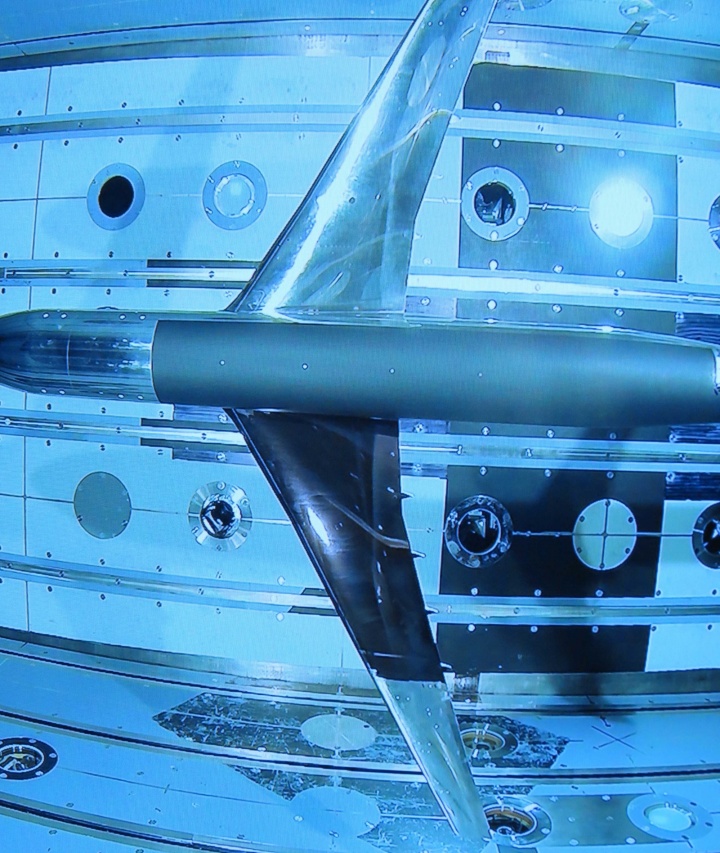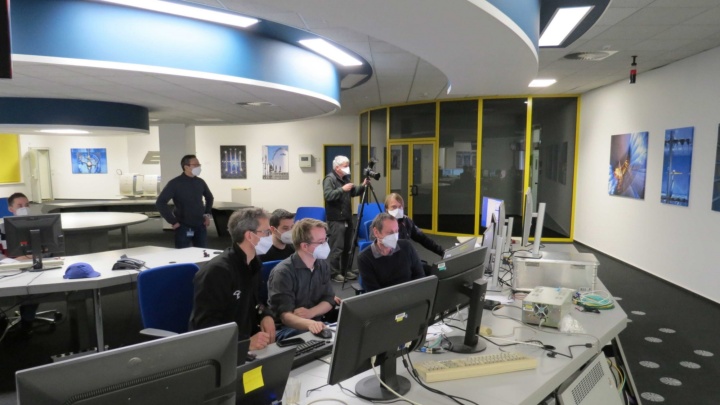The third wind tunnel entry of FOR 2895 took place in the European Transonic Windtunnel in March 2022. It focused on measurements of the flow field around the XRF1 model without UHBR nacelles at high-speed stall conditions for high Reynolds numbers by adapting and performing cryogenic Particle Image Velocimetry (“cryoPIV”). The measurements were planned, prepared and conducted by a team from the German Aerospace Center (DLR) (Institute of Aerodynamics and Flow Technology, Department of Experimental Methods, contact: Dr. Lars Koop, to significantly expand the investigations of this configuration using pressure sensitive paint during the first wind tunnel entry in 2020 with flow field data.
Particle Image Velocimetry (PIV) is a contactless and non-invasive optical measurement technique, which allows for acquisition of instantaneous velocity fields in turbulent flows. Hereto, small particles (“tracer particles”) are injected into the fluid, which then follow the flow (seeding). They are illuminated by a sheet of light, usually generated by high-power lasers, allowing to generate snapshot images with fast-interframe or high-speed cameras at several consecutive moments in time. Analyzing the displacement of the particle images between the snapshots using local cross-correlation, complete flow fields can be determined. Successful conduction of PIV under cryogenic conditions (cryoPIV) as in ETW comes along with a variety of special challenges, which have to be addressed with dedicated measurement installations / modules and procedures.
Two different types of PIV systems were used, which comprise one high-speed stereo PIV-system and two novel triple-frame stereo PIV systems. They allow for acquisition of all velocity components in remotely moveable and adjustable fields of view and to reconstruct the velocity spectra of the flow therein. The resulting set-up comprising six PIV cameras with remotely controllable camera adapters, six high-power laser systems with remotely controllable beam-path and light-sheet optics as well as a dedicated seeding system to generate microscopic ice-crystals constitutes a complex setup that requires elaborate preparation and careful operation before and during the measurements. As a result, the non-stationary flow fields around a detailed passenger aircraft configuration could be measured with unprecedented spatial and temporal resolution under realistic flight conditions even at the borders of the flight-envelope.
The measurement program involved various conditions at two different Mach and Reynolds numbers at different predefined angle of attack settings. Several PIV focus planes were measured that had been previously defined by the researchers before, based on measurement data from the first test entry and numerical simulations. These included planes on top of the upper side of the wing to capture shock oscillation and flow separation, and multiple planes between the wing and the horizontal tail plane, placed one after the other in a row in downstream direction, to cover the development of the separated wake of the wing before it impinges onto the tail plane.
The large amount of flow field data gathered from the measurements, combined with the valuable data from the PSP measurements of the first entry, will help the researchers involved in FOR 2895 to analyze and understand the phenomena of high-speed stall for high Reynolds numbers in more detail.
| Contact | Johannes Kleinert, Institut für Aerodynamik und Gasdynamik (IAG), Universität Stuttgart Johannes Bosbach, Institut für Aerodynamik und Strömungstechnik (IAS), DLR Göttingen |
|---|




